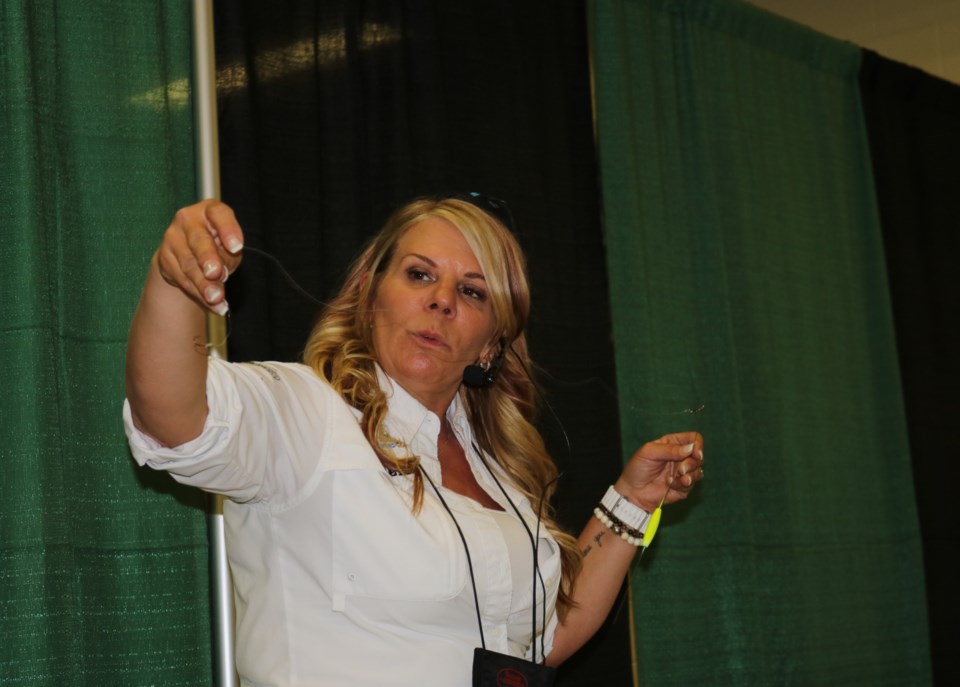YORKTON - With Good Spirit Lake and Lake of the Prairies both within easy driving distance of most anglers in the parkland, going after walleye is a passion for many.
But, some days the walleye don’t seem all that interested in accommodating the angler.
Saturday interested anglers were offered up some basic tips by Lisa Roper at the 2023 edition of the Parkland Outdoor Show & Expo.
But, Roper, who is best known for ‘Lisa Roper Outdoors’ began her presentation by reminding those attending it’s not about trophy catches when you head to the water.
“I like catching big fish like everybody else does, but it’s so much more,” she said noting the memories of shore lunches and friendships.
Still, it’s nice to catch fish for a shore lunch too.
Roper said the starting point is to understand there are times walleye are aggressively feeding, and that is when the fishing is great.
Other times walleye will be sort of neutral to feeding, not exactly opposed to grabbing a bite to eat, but not exactly hunting for food.
And finally there are times walleye have almost no interest in feeding, said Roper. It’s at such times when an angler has to convince the fish to take a lure.
In all cases, Roper said when using bait, present it in a way that looks natural.
For example, when jigging, if using leeches attach the thicker end to the hook allowing ‘the head’ to act naturally in the water, said Roper.
A minnow should be presented vertically, like it is a live fish, the natural prey of walleye.
In the hotter months Roper said she’ll patrol lakes more.
“I do a lot of trolling for walleye in the summer,” she said, noting it’s harder fishing in July and August.
Part of the reason it’s tougher is that walleye do not like bright conditions because it hampers their eyesight which typically gives them an edge as predators, so they go to deeper water on bright sunny days, said Roper.
“Decreased light intensity allows them to use sight as an advantage,” she said.
While light is a factor, so too is weather. Roper said walleye tend to be better feeders when weather conditions have been stable for three or four days in-a-row.
“The best walleye fishing is in stable weather,” she said.
When trolling Roper turns to spoons and rattles, but it’s more than tossing a favourite hook out and having it trail the boat, said Roper.
Roper said she does like the dimpled spoons from Len Thompson suggesting they create “a bit more vibration,” in the water which helps attract the attention of walleye.
“It’s getting the spoon at different levels of water,” she said.
Roper said she typically trolls at 1.6 to 2.1 miles per hour, and since “walleye are very sensitive to light,” trolls deeper in sunny conditions, although never going too deep.
“My personal preference don’t go over 25 feet,” she said.

